Advertisement
The 2020 Election And The Future Of Offshore Wind Power In The U.S.
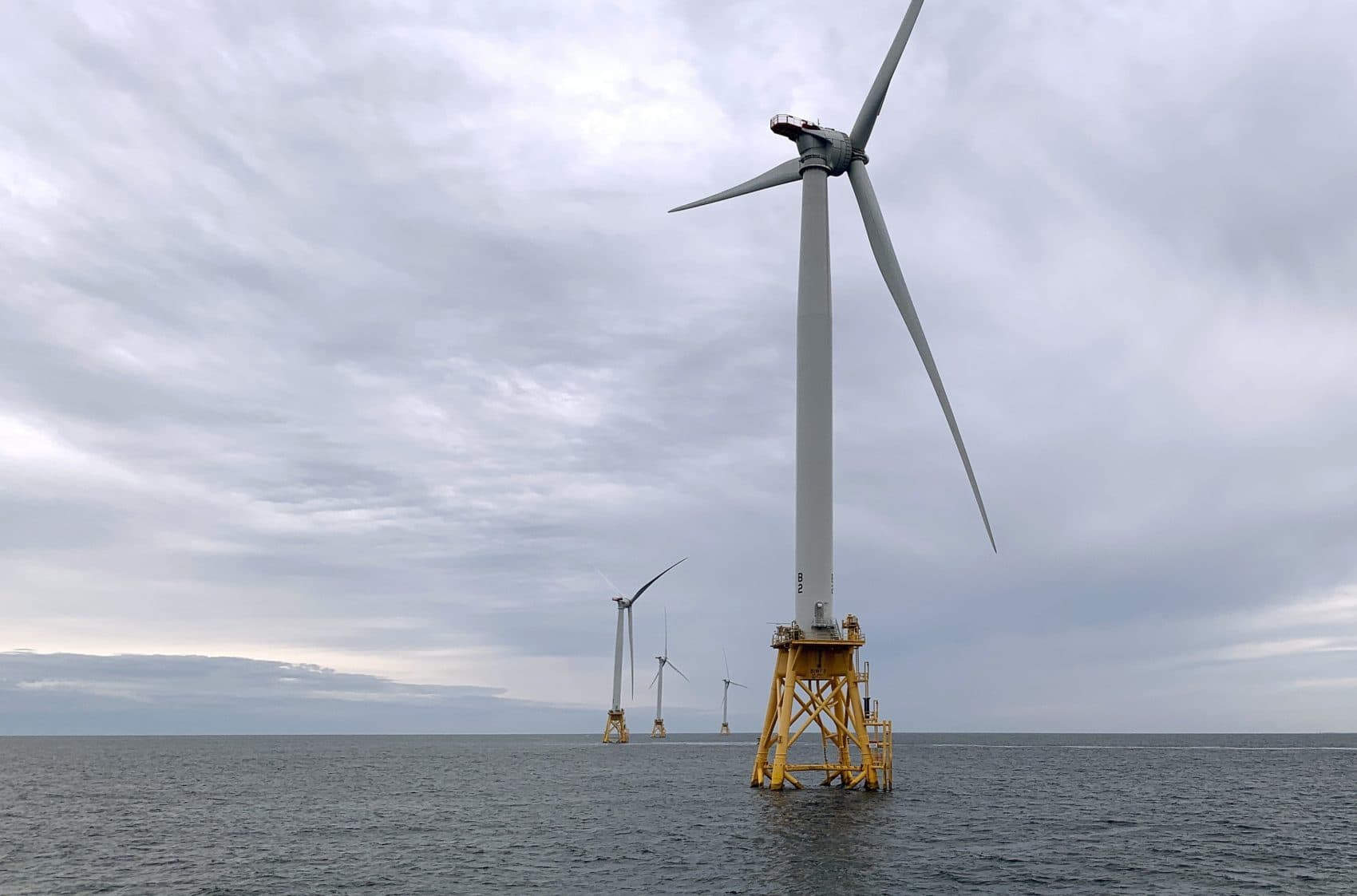
Editor's Note: Want to help us improve our climate coverage? Take this short survey to let us know what you like and what you want more of from our reporting.
There are nine offshore wind projects currently on the drawing board for the Atlantic coast. Northeast governors need those wind turbines to help meet their states' clean energy goals, and are competing for the land-based businesses that will supply the new industry — and could bring tens of thousands of jobs to the region. Industry analysts estimate that investment in U.S. offshore wind could hit $108 billion by 2030.
But this blue-sky vision has one large uncertainty: Donald Trump.
“I never understood wind,” the president said last December. “You know I know windmills very much. I’ve studied it better than anybody. I know it’s very expensive.”
Trump says windmills, as he calls them, are also noisy, ugly and cause cancer.
But as the election approaches there are signs the Trump administration’s position on wind energy could be shifting.
That comes at a critical time for the development of offshore wind, especially in New England. Last year, at the last minute, the administration surprised the industry, stalling construction of the nation’s first large-scale wind project off the coast of Martha’s Vineyard.
'A Globally Significant Wind Resource'
European developers have been building offshore wind farms for nearly 20 years. Today, there are more than 5,000 electricity-generating turbines in European seas. In the U.S. there are just five, 15 miles off the coast of Rhode Island.
“The Rhode Island-Massachusetts wind energy area is as strong as any wind resource anywhere in the world,” says Matthew Morrissey, head of New England offshore markets with the Danish company Ørsted, the world’s largest developer of offshore wind. “This is truly a globally significant wind resource, which allows this amount of energy to be produced.”
Morrissey was formerly vice president of Deepwater Wind, which developed the five-turbine Block Island Wind Farm when it opened in 2016. That 30-megawatt farm — now owned by Ørsted — is just a small taste of what experts say is possible. The U.S. Department of Energy estimates offshore wind could generate twice as much electricity as the country currently uses.
Advertisement
And developers have long had big plans for a new offshore wind industry along New England’s coast. One example is the New Bedford Marine Commerce Terminal, the nation’s first — and still, only — offshore wind staging facility.
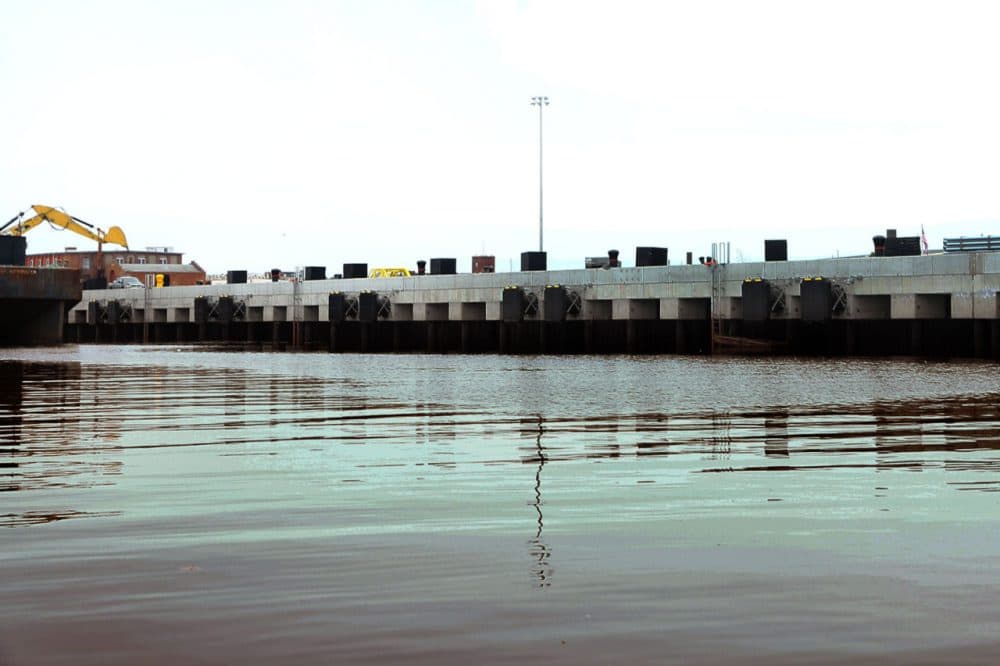
The 29-acre facility includes a pier four football fields long, able to support concentrated loads of up to 20,485 pounds per square foot. In 2020 Vineyard Wind and Mayflower — the first two offshore wind projects planned — signed multi-year leases totaling $32.5 million to use the staging facility.
“This was purpose-built for offshore wind,” says Bruce Carlisle, Managing Director for Offshore Wind with the Massachusetts Clean Energy Center (MassCEC), which owns and operates the port facility.
The terminal was built for the ill-fated Cape Wind project, which would have been the nation’s first offshore wind farm. Cape Wind was defeated, in part, by the efforts of two unlikely allies: Massachusetts Sen. Ted Kennedy and fossil-fuel billionaire Bill Koch, who objected because the 130 turbines would obstruct the views from their Cape Cod estates.
But now, Carlisle says, the terminal is ready for the future.
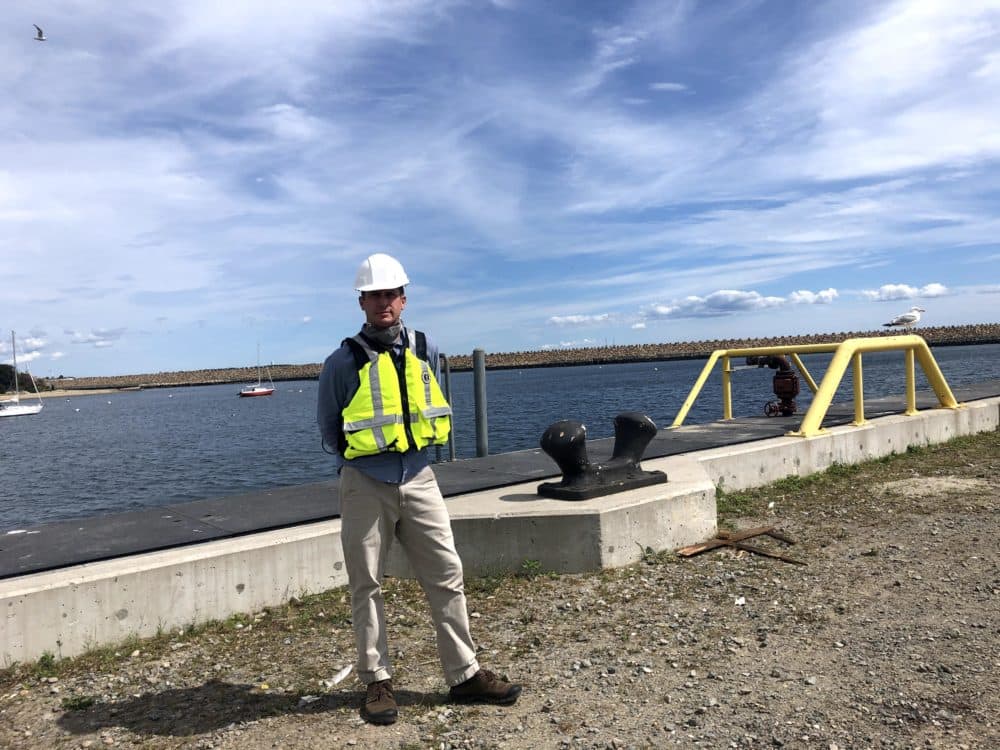
“This is specially designed to handle some of the heaviest loads in the world and certainly some of the largest cranes in the world,” Carlisle says. That's important because offshore wind is big: the bigger the tower, the longer the blade, the more power that can be generated.
The Block Island turbines, the largest available just four years ago, are about as tall as Boston’s Federal Reserve building. But they’re puny compared to the ones now being manufactured by General Electric in France for use by Vineyard Wind.
Last year, GE shipped one of their new turbine blades to MassCEC’s testing facility in Charlestown. The 351-foot-long blade was longer than the airplane hanger facility.
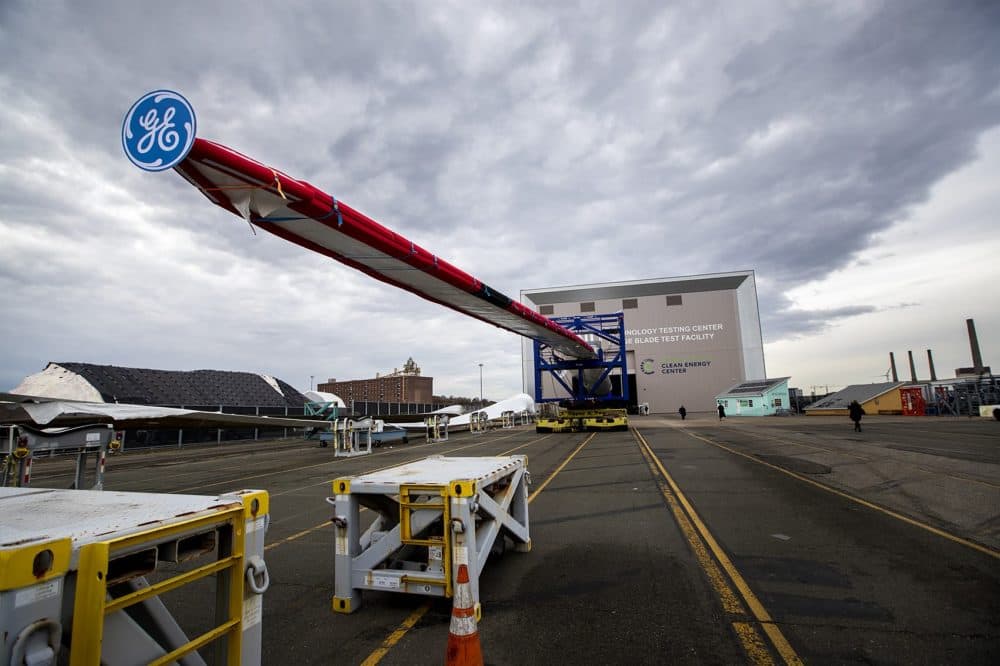
“We’re going to be importing these components from Europe, then we’re going to move into another phase,” Carlisle says. “It’s going to be the jobs and benefits from producing these locally.”
A Couple Of Catches
That’s the plan: build a new industry spawning tens of thousands of jobs and investing billions in businesses on land. But there’s a catch that could disrupt these big plans. In fact, there are a couple of catches — like scallops, cod, haddock and flounder, the mainstay of Scott Rorro's livelihood. Rorro is a third generation New Bedford fisherman — his boat “Ernest and Michael” is named for his grandfathers — and he's adamantly opposed to offshore wind’s big plans for the region.
“We’ve been fishing these waters since the 1800s," Rorro says. “What gives them the right to come in?”
Tom Reilly has been fishing out of New Bedford for 47 years, and he agrees with Rorro.
“It’s going to hurt our fishing," Reilly says. "The wind farms are going to be right in the traditional fishing areas. I’m against it."
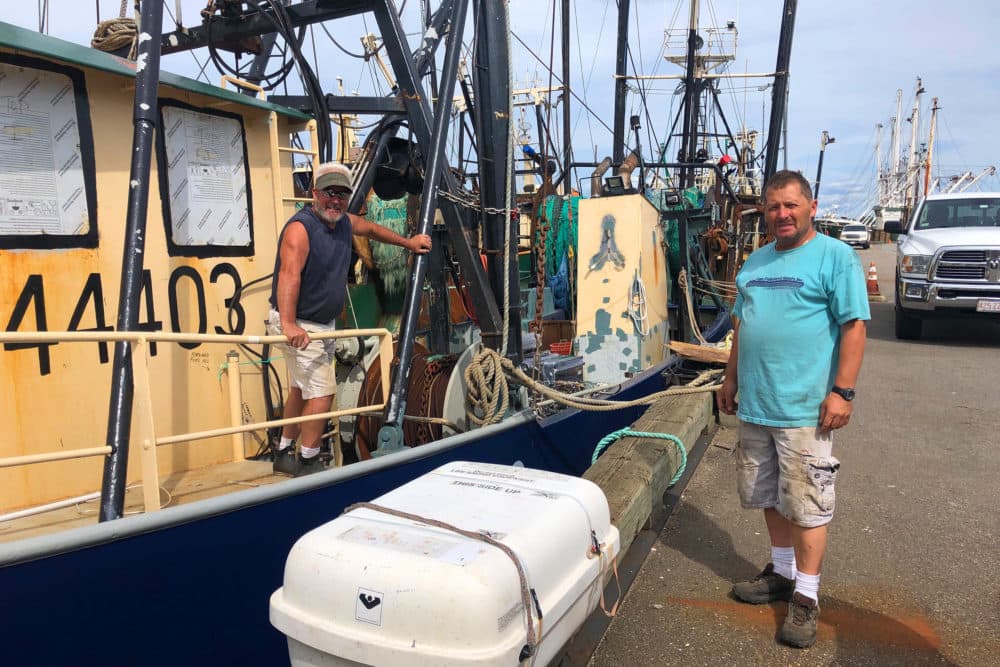
But until August 2019, it seemed like smooth sailing for the $2.8 billion Vineyard Wind. The 84-turbine development had all the required state and local environmental permits, and construction was set to start in a few weeks. Then the Trump administration unexpectedly decided to slow things down.
Secretary of the Interior David Bernhardt explained the administration's decision during a trip to Boston last summer.
“I asked that we do a reset, think more carefully about the things that were going on,” Bernhardt said. “Ultimately I need a development program that is done in a way that is sustainable for everybody.”
Bernhardt, a former gas and oil industry lobbyist, said federal regulators were surprised by the number of offshore wind projects states were planning along the Atlantic coast, and needed more time to study the projects' cumulative environmental impacts.
The 420-page Supplement to the Draft Environmental Impact Statement came out this summer. Broadly speaking, the report aligns with a 2016 strategy paper from the Obama administration.
Secretary Bernhardt now says he's eager to see offshore wind develop. In fact, the administration recently streamlined the federal environmental review process, reducing public input, which could speed up approval of large-scale projects, including offshore wind.
But the administration's nearly year-long environmental impact study delayed the first wave of offshore projects, putting billions of dollars in contracts up in the air. Vineyard Wind considered calling it quits.
When the draft impact statement was released, Vineyard Wind CEO Lars Pedersen said he was “pleased” with the findings, and confident that his company had done “a good job of trying to mitigate the effects we will have.”
Interior Secretary Bernhardt says the final impact report should come out in late November, with a final decision on Vineyard Wind in December.
In the meantime, Vineyard Wind has pledged tens of millions of dollars in compensation to fishing interests in Rhode Island, but the developer and Massachusetts fishermen are still far apart. One of the most contentious issues for fishermen in New Bedford is the spacing of the turbines at sea. Developers say one- nautical mile apart is safe, sufficient and efficient, and the U.S. Coast Guard agrees. But fishermen want dedicated transit lanes four nautical mile apart.
“It’s very frustrating that we’re this far along and there’s still just so much misunderstanding,” says Annie Hawkins, Executive Director of the Responsible Offshore Development Alliance (RODA), an advocacy group representing commercial fishing interests in the offshore wind development process. “(There are) very different cultures between fishing and offshore wind. So a large part of my job is basic translation between these two.”
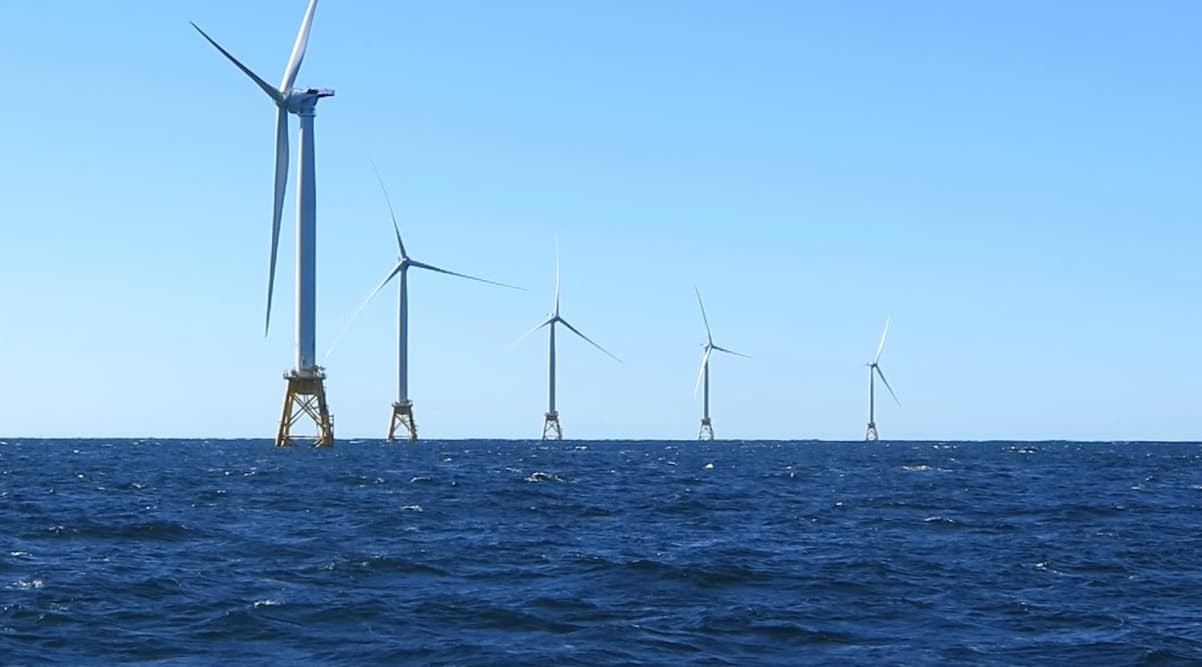
Hawkins says she wants to ensure the configuration of offshore wind farms will enable researchers to monitor fishing stocks, which are changing as the ocean warms and species move north. The draft impact statement found scientific research vessels would not be able to conduct annual surveys of the seas and marine life.
“I’m not sure anyone knows where all this is heading … there are a lot of wild cards here,” Hawkins says.
Joan Walsh, chair of field ornithology at Mass Audubon, says there is no question that thousands of offshore wind turbines will impact the ocean environment.
“It’s important for us to find out exactly what these turbines do when we put them in the water and to learn from that as we continue to develop the industry,” Walsh says, adding that she wants developers to fund independent, ongoing research as they build their projects.
But Walsh also says that the certainty of climate change leaves no alternative to offshore wind, and we all have an environmental and financial stake in the future.
“There are investors that are involved in this and they may be your pension plans and they may be my pension plans,” Walsh says. “It’s important for us to all understand what’s at stake here, and how we do the best we can to have this industry advance responsibly.”
Not 'As Partisan As You Would Necessarily Think'
Greenbacks and green energy are converging as a powerful political force as the upcoming presidential election approaches.
The developers of U.S. wind farms increasingly include companies traditionally wed to fossil fuels. Recently, British Petroleum took a $1.1 billion dollar stake in two wind projects along the Atlantic coast. And in September 2020, General Electric announced that it would stop making coal-fired power plants, placing its bets instead on renewable energy sources, like wind.
“It does not appear to be as partisan as you would necessarily think,” RODA's Annie Hawkins says.
But still, there are wide differences between President Trump’s past negative statements about wind energy, which casts uncertainty over the industry’s future and Joe Biden’s aspiration for the country to use only carbon-free electricity by 2035.
“Definitely the outcome of the November election is going to have some impact on the offshore space,” says Dan Shreve, head of global wind research at the energy consulting firm Wood Mackenzie.
Shreve predicts “business as usual” under a second Donald Trump administration, saying there would be a slow buildout of offshore wind projects now planned. But he believes that Biden would take more aggressive action, opening up more federal waters to developers, adding needed certainty to their investment decisions.
Under such an accelerated timetable, Shreve estimates that by 2030 the U.S. could be generating the same amount of offshore wind that is being generated in European waters, today.
This story is part of Covering Climate Now, a global journalism collaboration of more than 400 news outlets committed to better coverage of the climate crisis. This Sept. 21-28 collaborative week focuses on the intersection of climate change and politics.
This segment aired on September 22, 2020.
